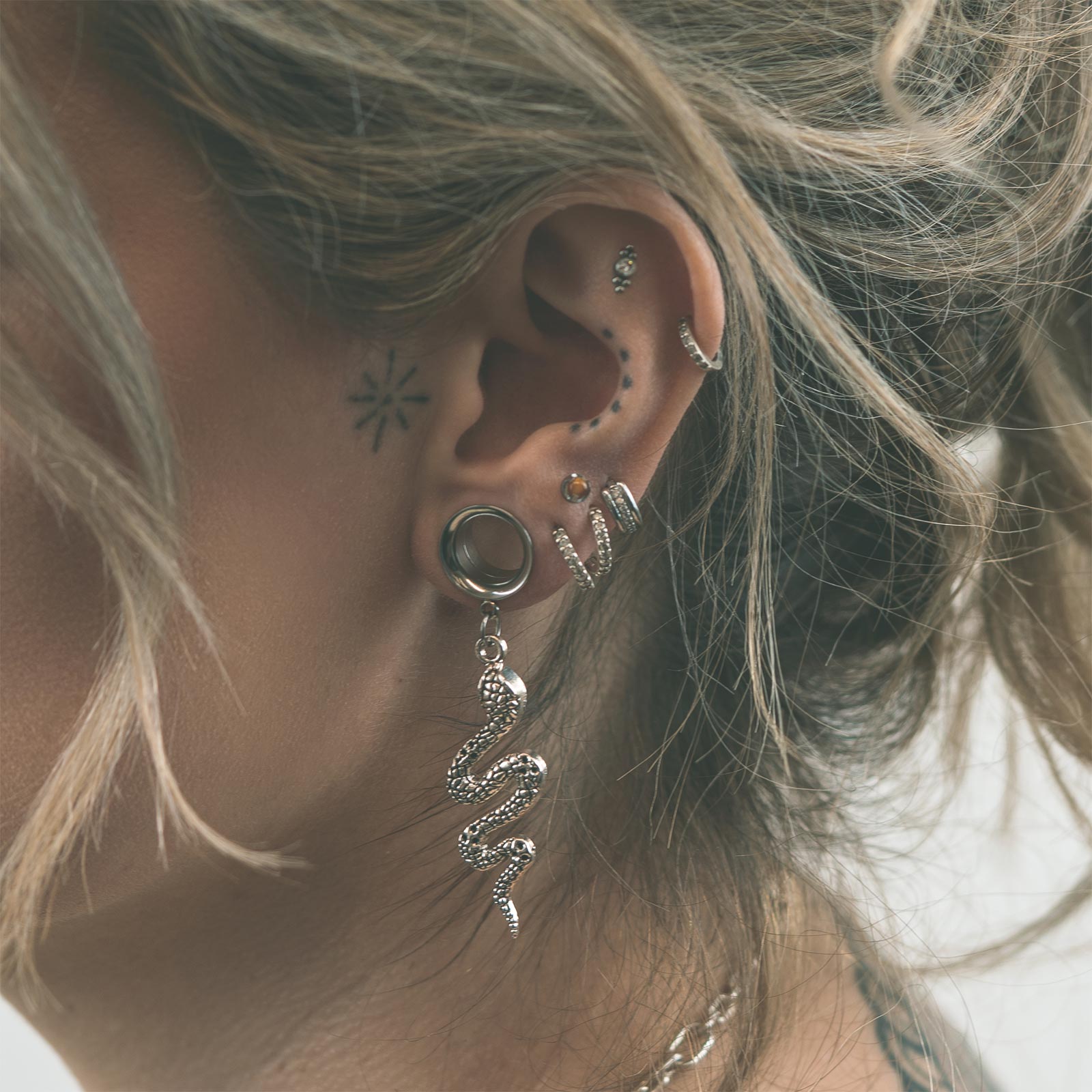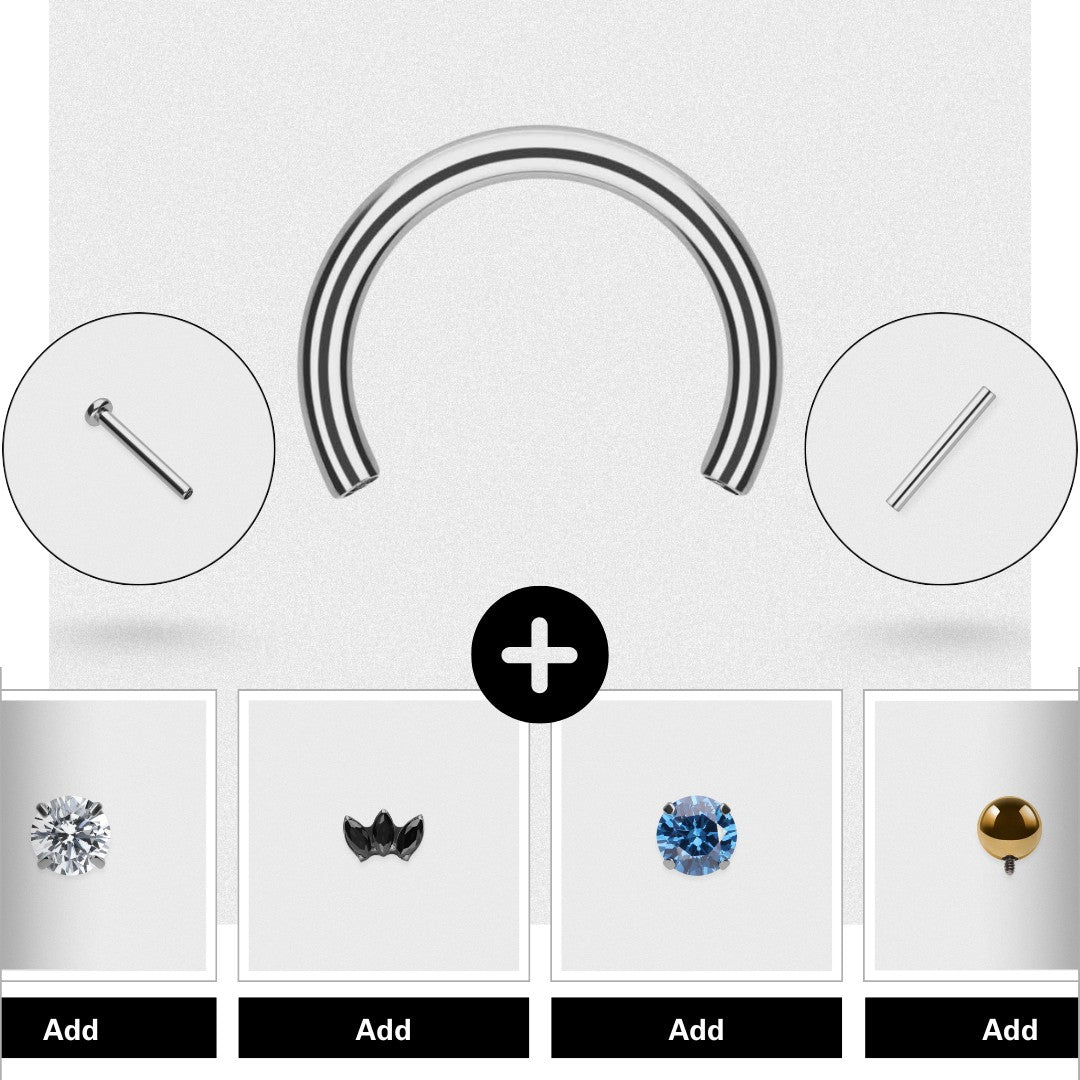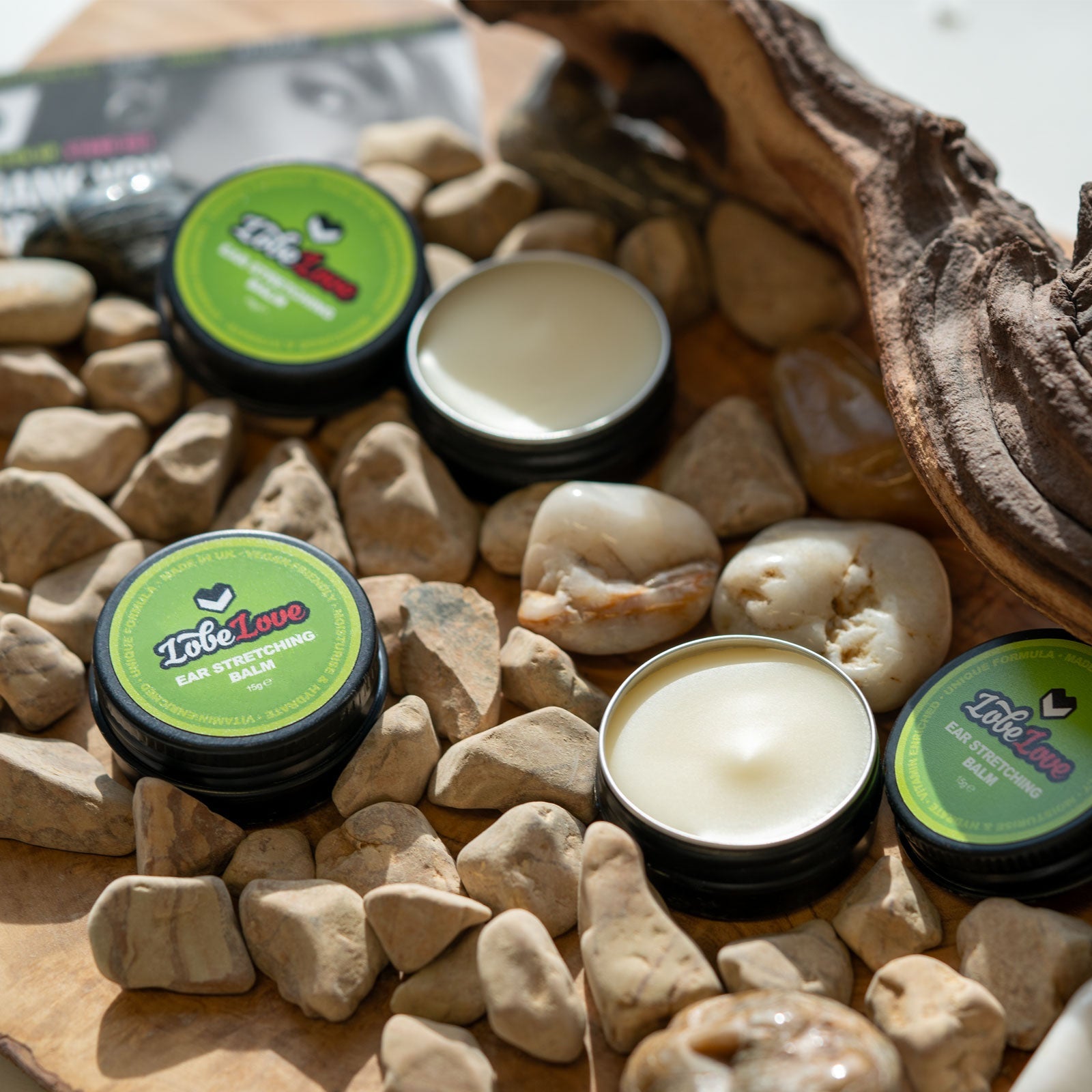"It’s vital to start looking after your tongue piercing with immediate effect, to safeguard against the many and varied things that can go wrong without due TLC. So, start the way you mean to go on with a robust aftercare routine."
Shall we talk about tongue piercings? Why not. After all, they’re everywhere these days, from your favourite bands to the latest alternative fashion models on Instagram. Tongue piercings are edgy, fun, and very on point when you’re craving a rebellious vibe.
But hang fire before you go rushing to add some metal to your mouth. Let’s keep it real for a second, as we provide the answers to a frequently asked question: Are tongue piercings safe?
Truthfully, tongue piercings (like any other type of piercing) should be safe when they’re done properly, and when you’re solid with oral hygiene. But, it’s not all sparkly balls and sick selfies.
The thing is, tongue piercings have a rep for being a bit risky, especially when it comes to your teeth and gums. And as far as aftercare goes, it’s not like you can put lotions and potions in your mouth to soothe any irritation.
So, let’s drill down into the burning question, starting at the beginning with different kinds of piercing for the tongue.
What are the Different Types of Tongue Piercings?
You might automatically think of a classic vertical tongue barbell dead centre on the tongue. Most people do. These are known as midline tongue piercings. But they’re not the only type of piercing adorning tongues, even though they’re the most common.
So, what other types of piercings might you want to consider?
Midline tongue piercing
Let’s start with the most obvious we’ve already mentioned. This vertical top-to-bottom stab through your tongue is a classic go-to and it packs a serious style punch. But it’s also one of the higher maintenance tongue piercings (more of which shortly).
Frenulum tongue piercing
This sneaky number through the thin web of skin under your tongue is low key with high cool factor.
Horizontal tongue piercing
Forget the usual top-to-bottom. This bad boy goes from side to side through your tongue. It’s an eye-catcher. But not for the faint-hearted.
Snake eye tongue piercing
This defiant horizontal piercing right near the tip of your tongue has a snake-like aesthetic (like the name suggests). But it’s got more than its fair share of risks. Nerve damage, muscle issues, and broken teeth? Yep, they’re on the menu. So, approach with caution and enter at your own risk.
Surface tongue piercing
The rarest of them all, it’s a horizontal surface piercing with a curved tongue barbell sitting along your tongue’s surface. Unquestionably unique. But these seditious tongue piercings also demand extra TLC.
Venom tongue piercing
Double trouble! This is two midline piercings, one on each side of your tongue, giving a badass, fang-bite look.
That said, there are some scenarios where your tongue piercing journey can come to an abrupt end before it’s even started.
Not Every Tongue Is Piercing-Friendly

You might not be expecting this. But there’s more to it than sticking a needle in your mouth and you’re off. Your tongue’s biology plays a massive role in whether you’re able to get a piercing - or not.
So, what might make you an unsuitable candidate for a tongue piercing?
Short Tongue
A tongue piercing might be off the cards if you’ve got a shorter than average tongue, or the webbing under your tongue is extra close to the tip. This is because your piercer needs enough space to safely pierce through without hitting any of the veins running along the underside of your tongue. Otherwise, piercing in the wrong spot can lead to some seriously nasty complications, like excessive bleeding and nerve damage.
Veins
It’s highly likely you’ve never thought about where the veins in your tongue are. But they can be the difference between being able to get a tongue barbell or your tongue remaining bar-less. In short, it’s not going to be for you if there are veins running close to the middle of your tongue.
But let’s assume you’re good to go, in which case the big consideration is the potential damage.
Let’s Be Realistic about Risks
Tongue piercings (especially midline piercings) penetrate sensitive muscle tissue. Plus, it’s no secret they can wreak havoc on your teeth and gums. Over time, the constant rubbing of your tongue piercing jewellery can cause all sorts of issues.
These are key factors when you’re asking, “Are tongue piercings safe?”, because pierced tongues are notorious for causing the following problems:
Gum recession
Your shiny new tongue barbell might look cool when it's freshly done. But it can cause your gums to recess as it rubs against them, exposing the roots of your teeth, and even acting as a catalyst for tooth loss.
Infections
Your mouth is a warm, wet environment, making it a prime culprit for bacteria to thrive. Good oral hygiene can help minimise this risk. But infections are always a possibility.
Migration and rejection
Your body might decide it doesn’t want to host your new piercing and start pushing it out. This can lead to migration (where the piercing moves) or outright rejection.
Nerve damage
Piercing through the wrong spot on your tongue can lead to permanent nerve damage, particularly horizontal piercings, which can have an adverse impact on the way you eat and speak.
Tooth damage
Tongue piercings and teeth don’t always get along, sometimes resulting in enamel erosion to full-on cracks. So, you might unintentionally be fast tracking yourself to the dentist’s chair.
Speech issues
Some people find their new piercing alters how they speak, especially with horizontal piercings. This might not be a big deal for everyone. But it’s worth giving a second thought to.
It’s essential to weigh up these risks before going ahead. But remember, thousands of people have completely safe and successful tongue piercings. For this purpose, aftercare plays a major part in ensuring you’re one of them.
The Healing and Aftercare Process
New tongue piercings involve a lot of swelling. Your tongue will blow up like a balloon for the first few days. But fear not! This is totally normal. It just makes talking and eating a bit tricky until the swelling starts to go down. This is why professional piercers tend to use longer tongue bars to allow for the swelling.
In addition, it’s vital to start looking after your tongue piercing with immediate effect, to safeguard against the many and varied things that can go wrong without due TLC. So, start the way you mean to go on with a robust aftercare routine:
Ice, ice, baby
Cold water, ice cubes and ice lollies are your best friends in the early stages, to help you with lisping and awkward food situations.

Cleanliness is king
Hygiene is critical when it comes to tongue piercings. In fact, it’s SO important it can be the difference between successful healing and a trip to A&E with an unpleasant infection. Stick to alcohol-free mouthwash and avoid whitening chemicals or charcoal, which can irritate the healing tissue. Oh, and steer clear of spicy foods for a bit, unless you enjoy the feeling of your tongue being on fire. (Spoiler. You won’t.)

Scrape, rattle and roll
Invest in a tongue scraper once your piercing has started to heal. It might sound like overkill. But truthfully, this humble tool is worth its weight in gold. It helps keep your tongue fresh and clean, which can’t be underestimated during the healing process.

Plaque attack
Not the most attractive side effect of tongue piercing. But plaque can build up on your tongue piercing jewellery, just like it does on your teeth. The bottom bead is particularly notorious for trapping food particles. Gross! So, get conscientious about cleaning it. Simpler tongue bars are easier to keep clean, while more elaborate tongue piercing jewellery can be breeding grounds for bacteria. It’s a good reason for substance over style in the early days.

Consistency is queen
Don’t think you’re off the hook, even after your piercing is healed. You’ll need to keep up the regular cleaning and always be mindful of how your tongue piercing jewellery interacts with your teeth and gums.

Dental check-ups
Keep an eye out for any signs of damage, like gum recession or enamel wear. And see your dentist regularly. It’s better to catch any issues early, before they become serious problems.

And remember the jewellery you use is integral to the safety of your tongue piercing.
Tongue Piercing Jewellery to Choose and Avoid
K.I.S.S (keep it simple, stupid!)
Less is more, at least in the beginning. Those cool oversized pieces might be tempting. But they’re not the best option when your piercing is fresh. Instead, you’ll want something smooth, simple, and easy to clean, like a classic gold or titanium tongue barbell. Save the funkier, more decorative tongue bars for later when everything’s healed up nicely.
Once you’ve pressed through the healing stage, it’s time to start having fun with your tongue piercing jewellery. And there’s a galaxy of options to explore, whether you’re into sleek metals or something flashier.
But always, always remember, comfort and safety first. This ideally means bezel-set or smooth, low-profile designs. Unlike prong settings, they won’t scratch the roof of your mouth or trap bacteria.
Pro tip:
Stick to jewellery specifically made for your tongue. And use a smaller ball on the underside of your tongue if you want to play it extra safe. Less risk, more style!
You asked, “Are tongue piercings safe?” Stretch It Body Jewellery answered! Tongue piercings are undeniably cool. But they’re also a serious commitment. So, make sure you’re doing it with your eyes wide open when you’re ready to take the plunge.
This includes paying your dues to the ‘holy trinity’ of tongue piercing:
- Don’t neglect meticulous care
- Don’t be afraid to downsize your tongue piercing jewellery once the swelling goes down
- Check in regularly with your dentist
And if you’re ready to get started with tongue piercings (or any piercings for that matter), check out our website. You’ll find everything you need to know about the process, from tongue bars to aftercare. Your tongue will soon be standing out from the crowd!
Subscribe To Our Awesome Mailer
No spam. Just discounts, exclusive promotions and ear stretching tips & tricks you won't want to miss.




















